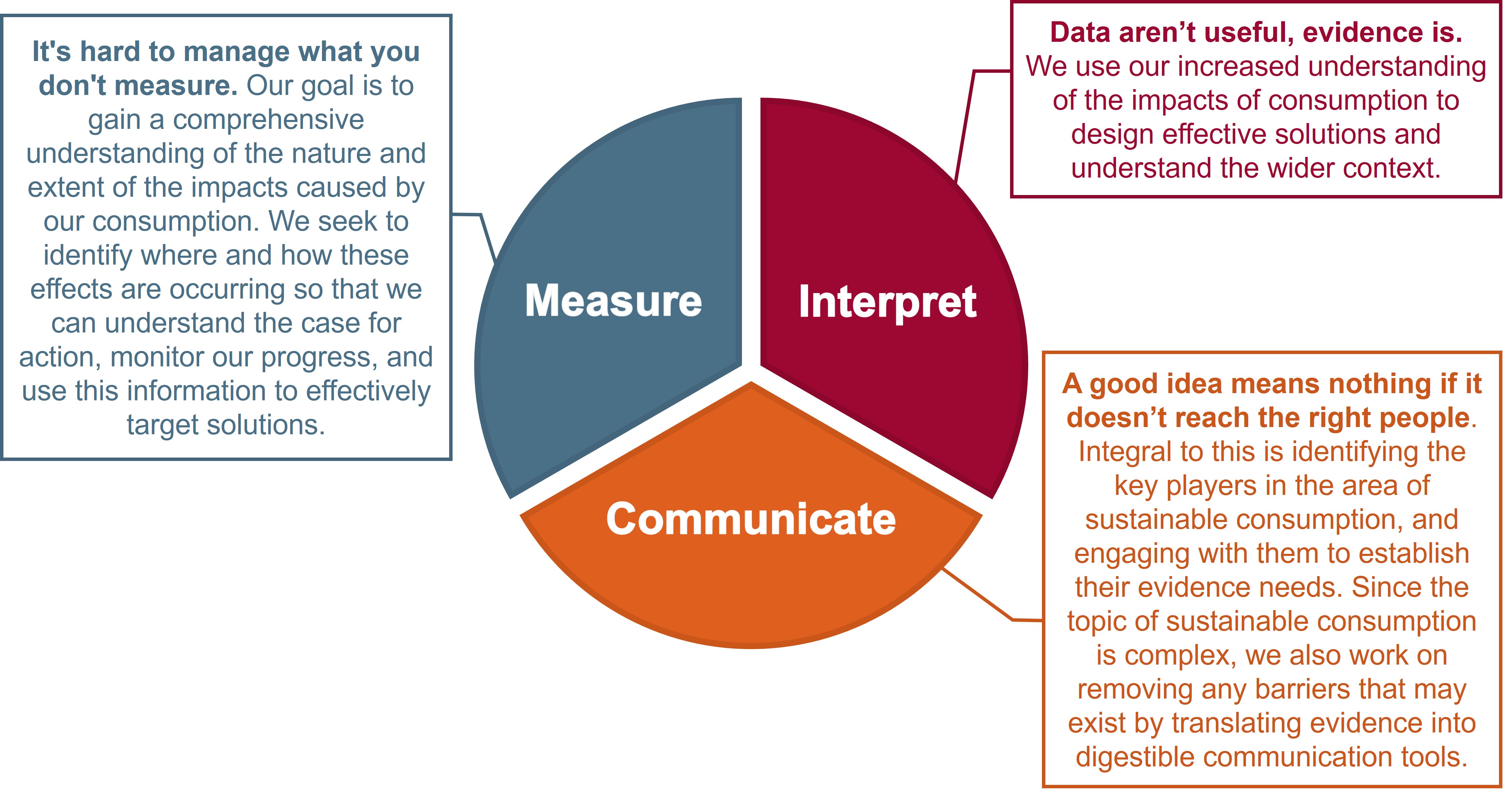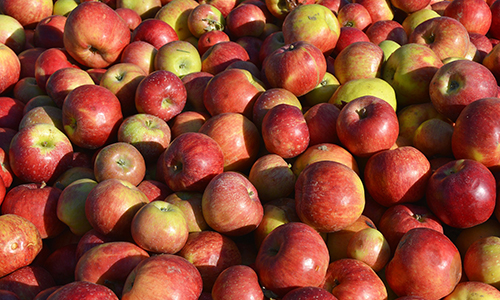Assessing the environmental impacts of UK supply chains
Unsustainable consumption poses a significant threat to our planet, depleting resources and causing a wide range of environmental impacts. Sustainable consumption is essential for preserving natural resources, protecting biodiversity, and mitigating climate change. To support the transition towards greener, more resilient supply chains, our work focuses on three main areas:
- measuring the sustainability of consumption,
- interpreting the data to design effective solutions and understand the wider context, and
- communicating the evidence to ensure it can be used by decision makers in the real world.

To keep up to date on our sustainable consumption work, sign up to our mailing list.
Outputs
JNCC has a long history of work within the field of sustainable consumption dating back to 2007, where the Global Biodiversity Database Protocol Development was undertaken by Scott Wilson. Since then, the number of projects and outputs has grown significantly, and we now have a small sub-team working on various aspects of sustainable consumption.
What we measure
It's hard to manage what you don't measure. Our goal is to gain a comprehensive understanding of the nature and extent of the impacts caused by consumption. We seek to identify where and how these effects are occurring so that we can understand the case for action, monitor our progress, and use this information to effectively target solutions. Our work includes the following:
The Global Environmental Impacts of consumption (GEIC) indicator development (2018 – 2025)
The GEIC indicator is one of our long-term projects which was developed in collaboration with Route2 (2018-19) and the Stockholm Environment Institute (2020-21). In October 2021, the indicator was released as a UK experimental statistic and a globally relevant dashboard, and in 2022, it was included as a component indicator under Target 16 of the CBD’s Kunming-Montreal Global Biodiversity Framework. Updates for the indicator occur annually, and development work is planned to continue until at least 2025.
JNCC Report 743: Understanding the Global Environmental Footprint and Impacts of Welsh Consumption (2023)
This report aims to improve understanding of the global environmental footprint and impacts of commodities that are consumed in Wales, but that may be produced anywhere in the world.
JNCC Report 658: Land use change related greenhouse gas emissions embodied in commodity production and trade (2020)
A time-limited study scoping out whether reliable figures are available on the percentage of global GHG emissions that would be reduced per year if the UK, Europe or the world shifted towards consumption of palm oil, beef and soy that did not lead to conversion of natural habitats during production.
JNCC Report 533: Assessing physical trade flows of materials of biological origin to and from Scotland (2014)
A joint study investigating physical trade flows within the narrower context of Scottish biomass consumption.
Earlier work
Earlier work includes the following:
- The global land use impact of the United Kingdom’s biomass consumption Part I: Biomass flows through the UK economy – an overview of biomass sources and overseas land requirements (2011)
- The biodiversity footprint of UK Foreign Direct Investment (2009)
How we interpret
Data aren't useful, evidence is. We use our increased understanding of the impacts of consumption to design effective solutions and understand the wider context. Recent work includes:
JNCC Report 747: Policy interventions to encourage sustainable consumption (2023)
This report aims to summarise policy interventions that could be used by governments to influence the sustainability of consumption – examples are shown below:
Which policy interventions can be used by governments to improve the sustainability of consumption?
How we communicate
A good idea means nothing if it doesn't reach the right people. Integral to this is identifying the key players in the area of sustainable consumption, and engaging with them to establish their evidence needs. Since the topic of sustainable consumption is complext, we also work on removing any barriers that may exist by translating evidence into digestible communication tools.
We communicate our work to multiple audiences in various ways, including through webinars, guidance documents and summaries, and blog posts.
Webinars
In December 2024, a month after the annual Global Environmental Impacts of Consumption (GEIC) indicator update, we ran three webinars aimed at different audiences to promote the use of the webinar.

A policy introduction to the Global Environmental Impacts of Consumption (GEIC) indicator
Find out what the indicator is, how to navigate the online dashboard, and how to use the data as an evidence source for UK policy makers.

A technical introduction to the Global Environmental Impacts of Consumption (GEIC) indicator
Find out what the indicator can do, and about the methods and modelling underpinning it.

Find out why the indicator was included as an indicator in the GBF, how to use it in national reporting, and why you might wish to do so.
If you would like to be notified about upcoming webinars, sign up to our mailing list.
Guidance documents and summaries
Recently produced guidance documents include:
An introduction to consumption-based metrics (2023)
This Annex, produced by JNCC for Welsh Government, provides a succinct summary of the report “Understanding the global environmental footprint and impacts of Welsh Consumption”.
The Linking Environment to Trade (LET) Guide (2020)
An entry-level guide to the area of sustainable production and consumption was produced, based on knowledge acquired from a review of over 250 initiatives aiming to link consumption to environmental impact.
Blog posts
Read some of our recent blog posts about development of the GEIC indicator and our other sustainable consumption work
Potential applications
This highly topical area has many potential applications and the possibility to make a real-world difference:
- Governments and policy makers could use such information as an indicator to model potential future effects of a proposed policy or to inform trade deals
- Businesses could use such information to ensure supply chain resilience and to demonstrate green credentials to their customers
- End-point consumers could improve their understanding of how to reduce environmental impacts through their own consumption
Published: .



